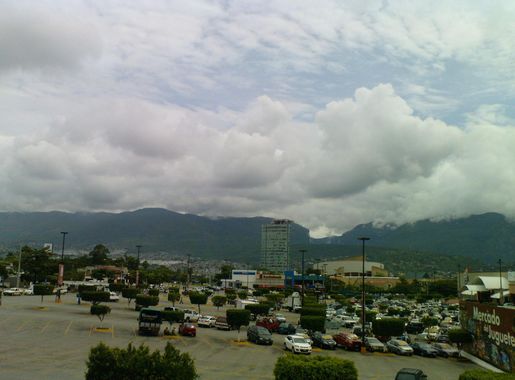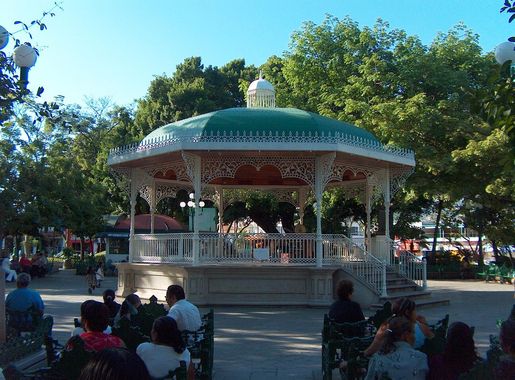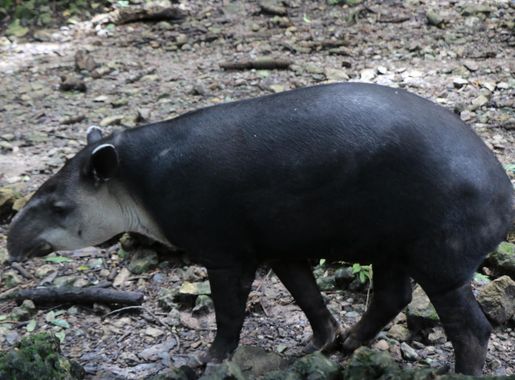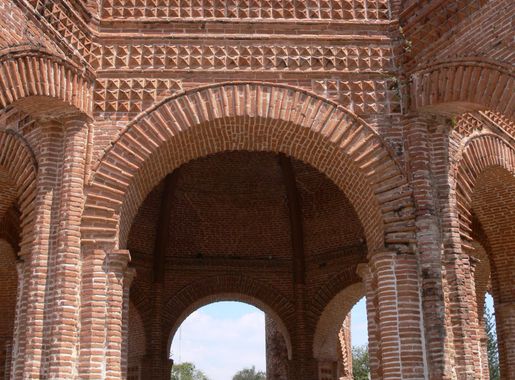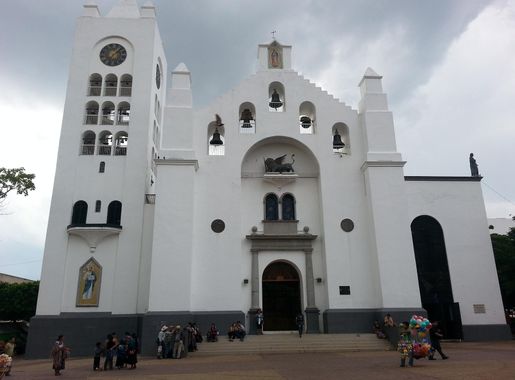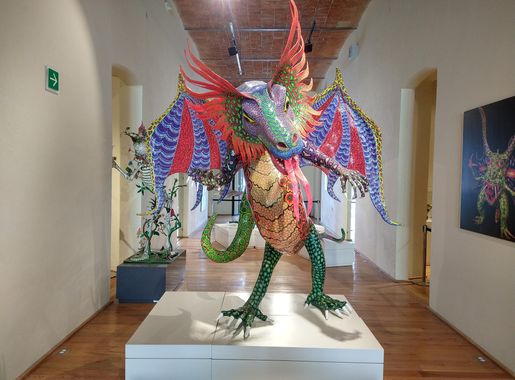
The Enchanting Heart of Chiapas: Tuxtla Gutierrez
Discover Tuxtla Gutierrez in Chiapas, Mexico – a vibrant city blending modern life with rich culture, stunning natural beauty, and delicious local cuisine.
Tuxtla Gutierrez, the capital of Chiapas, is a vibrant city that beautifully marries modernity with rich cultural heritage. Nestled in a valley surrounded by lush mountains, Tuxtla offers a unique blend of urban life and natural beauty. This bustling city is a gateway to some of the most stunning natural parks and reserves in Mexico, making it an ideal destination for nature lovers and adventure seekers alike. Stroll through the city's lively streets and discover a wealth of attractions. The Marimba Park is a must-visit, where you can enjoy traditional marimba music and dance performances. The Regional Museum of Chiapas provides deep insights into the local history and culture, showcasing artifacts from ancient civilizations. For a touch of tranquility, visit the stunning San Marcos Cathedral, an architectural gem that stands as a testament to the city's colonial past. Tuxtla Gutierrez is also a culinary delight. The local markets and restaurants offer a range of traditional Chiapas cuisine, from tamales and pozol to exotic fruits and artisanal cheeses. Don't miss the chance to sample these local flavors and perhaps take part in a cooking class to learn the secrets of Chiapas cooking. With its warm climate, friendly locals, and a plethora of activities to choose from, Tuxtla Gutierrez is a destination that promises unforgettable experiences.
Local tips in Tuxtla Gutierrez
- Visit the Marimba Park in the evening for a lively cultural experience with music and dance.
- Check out the Regional Museum of Chiapas to learn about the local history and ancient civilizations.
- Try the traditional Chiapas dishes at local markets and restaurants for an authentic culinary experience.
- Plan a day trip to the nearby Sumidero Canyon for breathtaking views and boat tours.
- Wear comfortable walking shoes as the city is best explored on foot.
The Enchanting Heart of Chiapas: Tuxtla Gutierrez
Tuxtla Gutierrez, the capital of Chiapas, is a vibrant city that beautifully marries modernity with rich cultural heritage. Nestled in a valley surrounded by lush mountains, Tuxtla offers a unique blend of urban life and natural beauty. This bustling city is a gateway to some of the most stunning natural parks and reserves in Mexico, making it an ideal destination for nature lovers and adventure seekers alike. Stroll through the city's lively streets and discover a wealth of attractions. The Marimba Park is a must-visit, where you can enjoy traditional marimba music and dance performances. The Regional Museum of Chiapas provides deep insights into the local history and culture, showcasing artifacts from ancient civilizations. For a touch of tranquility, visit the stunning San Marcos Cathedral, an architectural gem that stands as a testament to the city's colonial past. Tuxtla Gutierrez is also a culinary delight. The local markets and restaurants offer a range of traditional Chiapas cuisine, from tamales and pozol to exotic fruits and artisanal cheeses. Don't miss the chance to sample these local flavors and perhaps take part in a cooking class to learn the secrets of Chiapas cooking. With its warm climate, friendly locals, and a plethora of activities to choose from, Tuxtla Gutierrez is a destination that promises unforgettable experiences.
Iconic landmarks you can’t miss
Parque de la Marimba
Explore Parque de la Marimba: A cultural haven in Tuxtla Gutiérrez, Chiapas, where music, nature, and tradition come together for an unforgettable experience.
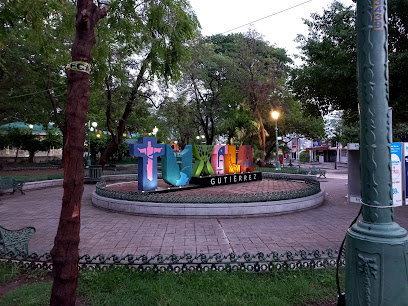
Parque Central de Tuxtla Gutiérrez
Discover the vibrant culture and serene beauty of Parque Central de Tuxtla Gutiérrez, your urban oasis in the heart of Chiapas.
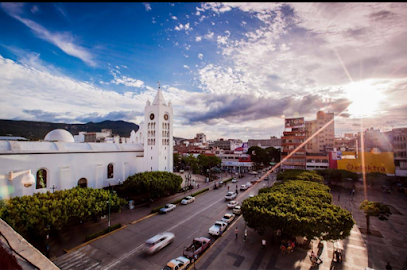
Parque Caña Hueca
Discover the serene beauty of Parque Caña Hueca, a lush urban park in Tuxtla Gutiérrez, perfect for outdoor activities and relaxation.
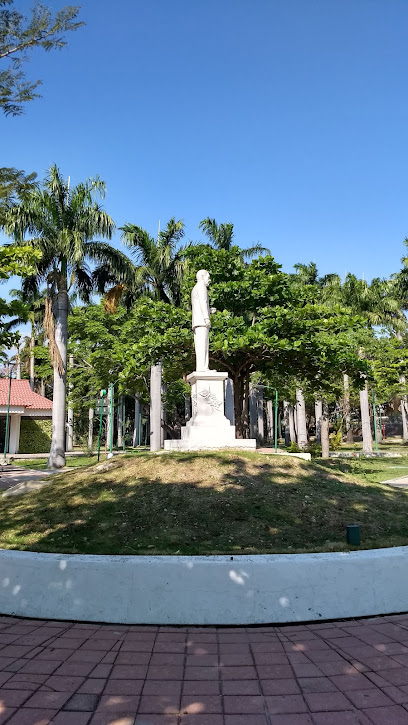
ZOOMAT
Experience the rich wildlife of Chiapas at ZOOMAT, where nature meets conservation in a stunning zoo setting.
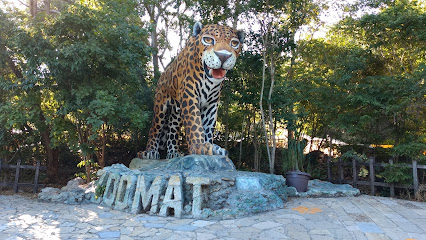
Parque Morelos Bicentenario
Discover the tranquility and beauty of Parque Morelos Bicentenario, an urban oasis in Tuxtla Gutiérrez, Chiapas, perfect for relaxation and cultural experiences.
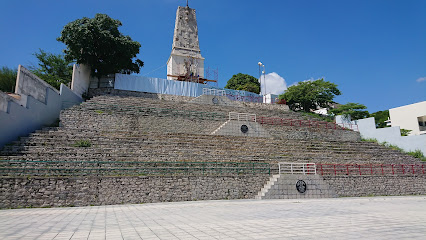
Jardín Botánico Faustino Miranda
Explore the lush landscapes and diverse plant life of Jardín Botánico Faustino Miranda, a must-visit botanical garden in Tuxtla Gutiérrez, Chiapas.

Museo del Café de Chiapas
Discover the rich heritage of coffee in Chiapas at the Museo del Café, where history, culture, and flavor come together in an aromatic experience.
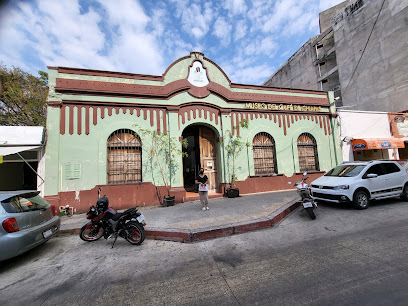
Calzada de las Personas Ilustres
Explore the artistic heritage of Chiapas at Calzada de las Personas Ilustres, Tuxtla Gutiérrez's vibrant promenade of history and culture.
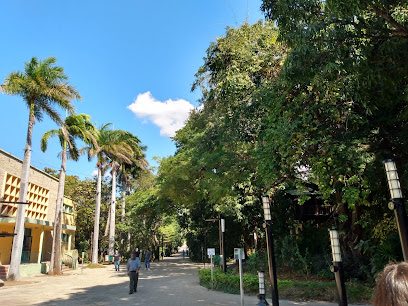
Museo de la Marimba
Explore the vibrant heritage of marimba music at Museo de la Marimba, a cultural treasure in Tuxtla Gutiérrez, Chiapas.
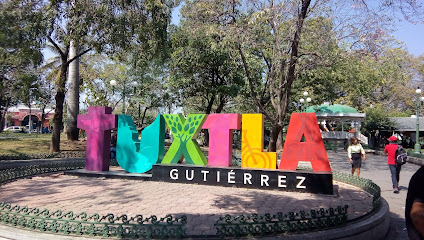
Museo Chiapas de Ciencia y Tecnología (MUCH)
Uncover the marvels of science and technology at Museo Chiapas de Ciencia y Tecnología, an interactive experience for all ages in Tuxtla Gutiérrez.
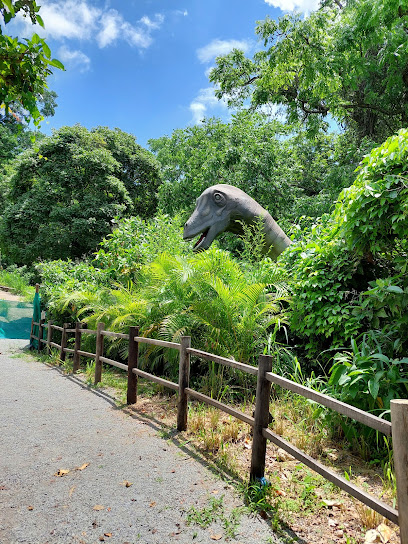
Letras de Tuxtla Gutiérrez
Explore the colorful murals and artistic spirit of Letras de Tuxtla Gutiérrez, a vibrant cultural hub in the heart of Chiapas, Mexico.
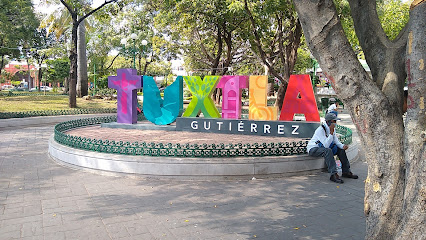
Fuente Monumental de la Marimba
Experience the vibrant culture of Chiapas at the Fuente Monumental de la Marimba, where music, architecture, and nature create an unforgettable atmosphere.
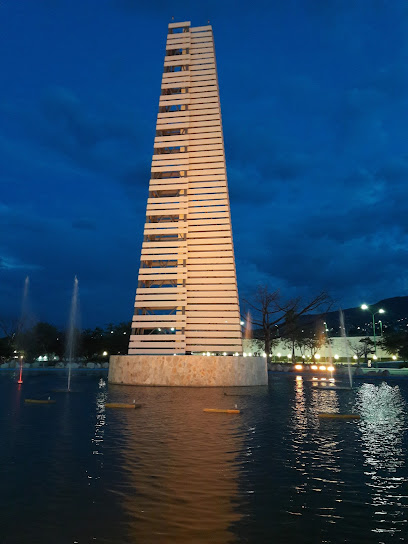
Monumento a la Anexión de Chiapas a México
Explore the Monumento a la Anexión de Chiapas a México, a historical symbol of unity and culture in Tuxtla Gutiérrez, Chiapas.
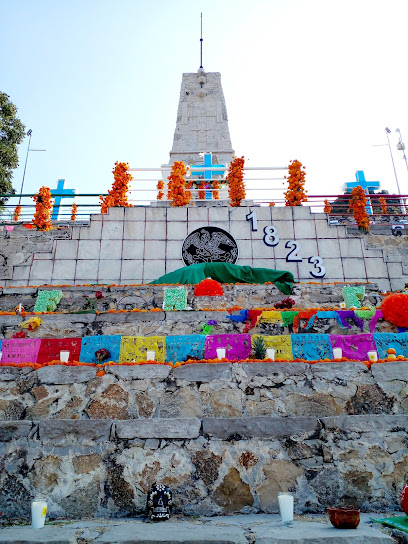
Réplica del Templo de las Inscripciones
Discover the beauty and history of the Replica of the Temple of Inscriptions, a captivating tribute to Maya civilization in Tuxtla Gutiérrez.
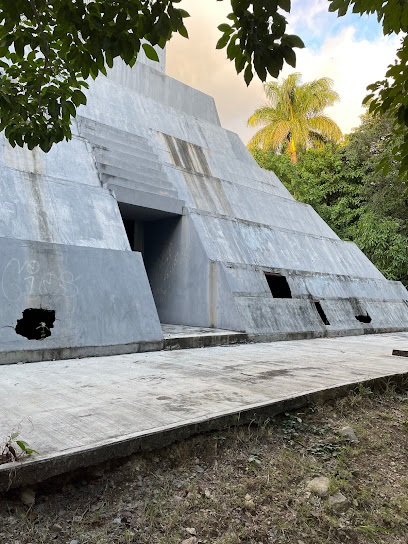
Monumento a la Cultura Chiapaneca
Explore the Monumento a la Cultura Chiapaneca in Tuxtla Gutiérrez, an iconic tribute to the rich cultural heritage of Chiapas, Mexico.
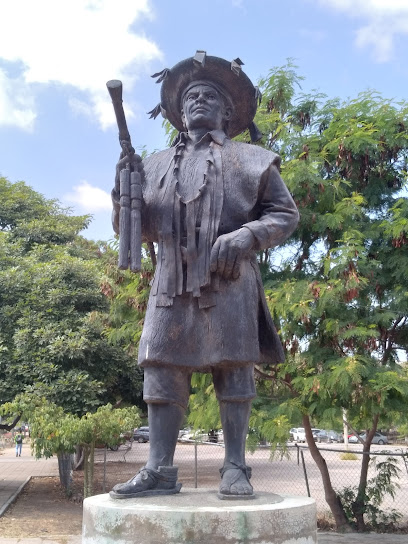
Unmissable attractions to see
Parque de la Marimba
Discover the vibrant culture and serene beauty of Parque de la Marimba, a musical oasis in the heart of Tuxtla Gutiérrez, Chiapas.
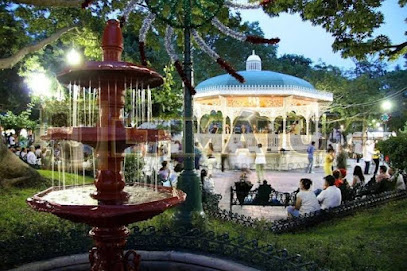
Parque Central de Tuxtla Gutiérrez
Explore the vibrant Parque Central de Tuxtla Gutiérrez, a lush urban park perfect for relaxation, culture, and community events in Chiapas, Mexico.
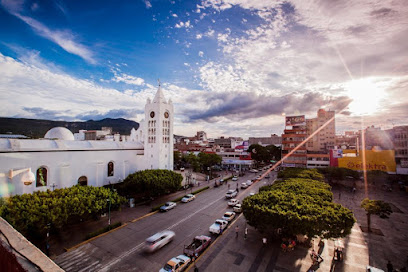
Parque Caña Hueca
Discover the lush landscapes and cultural vibrancy of Parque Caña Hueca, a premier urban park in Tuxtla Gutiérrez, Chiapas, perfect for relaxation and exploration.
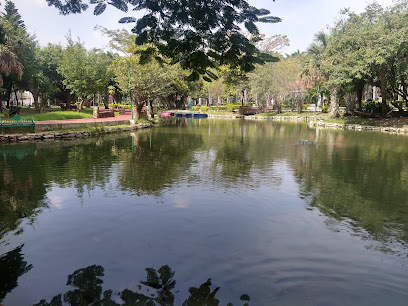
ZOOMAT
Discover ZOOMAT in Tuxtla Gutiérrez, Chiapas - a remarkable zoo celebrating the region's unique wildlife and biodiversity.
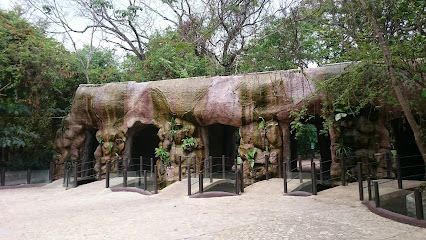
Parque Morelos Bicentenario
Discover the tranquil beauty of Parque Morelos Bicentenario, a serene urban park in Tuxtla Gutiérrez perfect for relaxation and family fun.
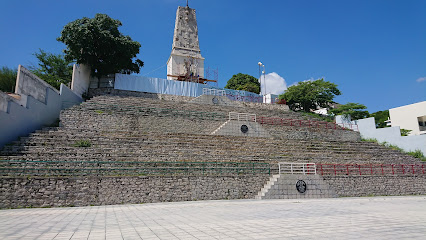
Chiapasiónate Park
Experience the lush landscapes and serene atmosphere of Chiapasiónate Park, a must-visit destination for nature lovers in Tuxtla Gutiérrez.
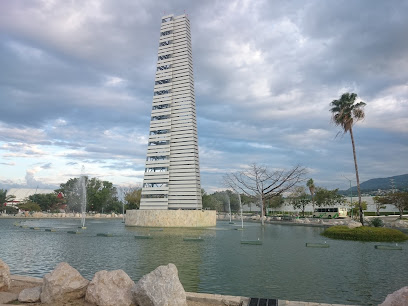
Calzada de las Personas Ilustres
Explore the cultural heart of Tuxtla Gutiérrez at Calzada de las Personas Ilustres, where history and art come alive.
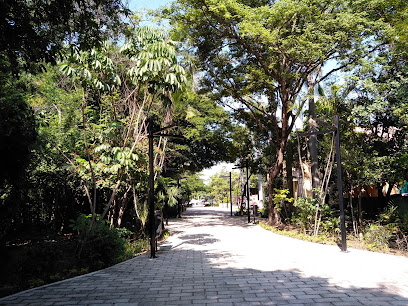
Museo de la Marimba
Experience the enchanting world of marimba music at Museo de la Marimba in Tuxtla Gutiérrez, a cultural gem celebrating Chiapas's musical heritage.
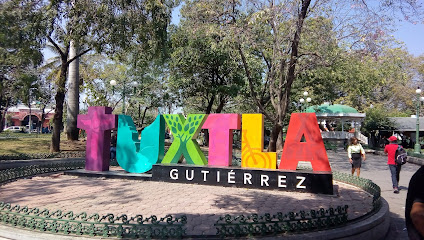
Angel Albino Corzo Monument
Explore the Angel Albino Corzo Monument, a significant cultural landmark in Tuxtla Gutiérrez, celebrating Chiapas' rich heritage and history.
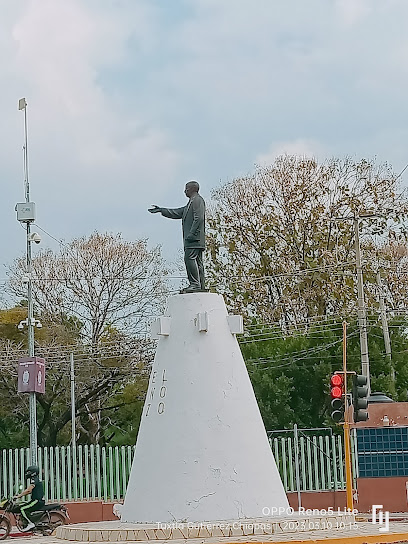
Monumento a la Anexión de Chiapas a México
Explore the historical Monumento a la Anexión de Chiapas, a majestic tribute to unity and culture in Tuxtla Gutiérrez, Chiapas.

Essential places to dine
Restaurante Las Pichanchas
Discover authentic Mexican flavors at Restaurante Las Pichanchas in Tuxtla Gutiérrez – where every dish tells a story.
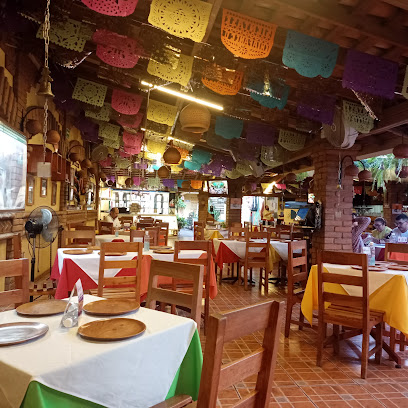
Tía Mechita Pro
Experience authentic Mexican cuisine at Tía Mechita Pro, where delicious flavors meet exciting sports action in Tuxtla Gutiérrez.
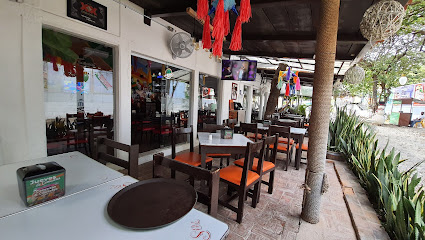
El Canillas [Restaurante]
Experience authentic Mexican cuisine at El Canillas in Tuxtla Gutiérrez—where every dish tells a story of flavor.
![El Canillas [Restaurante]](https://evendo-location-media.s3.amazonaws.com/RestaurantImages/bf290593-c82a-4e74-9d4c-02e2cb1ce6c6)
Otilia
Discover Otilia in Tuxtla Gutiérrez – where traditional Mexican grill meets modern dining in an unforgettable atmosphere.
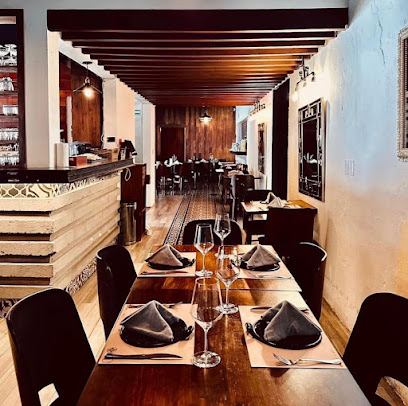
Humo y Leña Tuxtla
Discover Humo y Leña in Tuxtla Gutiérrez – where authentic Mexican flavors meet exceptional grilled cuisine.
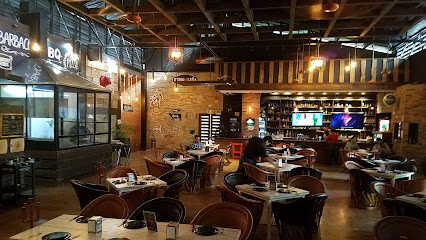
GUGO Restaurant
Discover the flavors of Mexico at GUGO Restaurant in Tuxtla Gutiérrez—where every meal is a celebration of local culinary traditions.
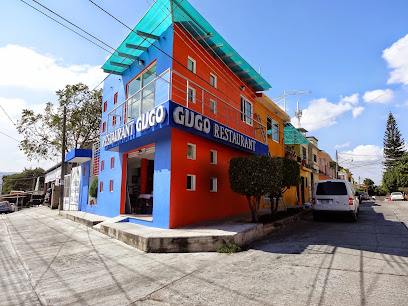
La Mansion
Experience exquisite dining at La Mansion in Tuxtla Gutiérrez, where traditional Chiapas flavors meet modern culinary artistry.
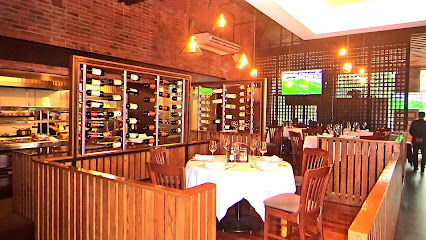
La Antigua Restaurant Familiar
Experience authentic family-friendly Mexican dining at La Antigua Restaurant Familiar in Tuxtla Gutiérrez - where every meal is a celebration.

All Cooking terrazza italiana
Savor authentic Mediterranean flavors at All Cooking Terrazza Italiana in Tuxtla Gutiérrez – where every meal is a delightful celebration of Italian cuisine.
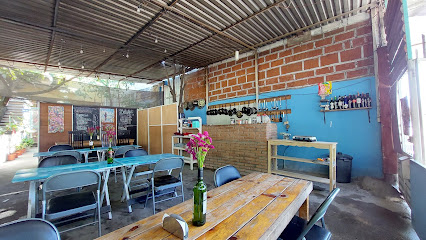
Banderas
Experience authentic Argentinian flavors at Banderas in Tuxtla Gutiérrez – where every dish tells a story!
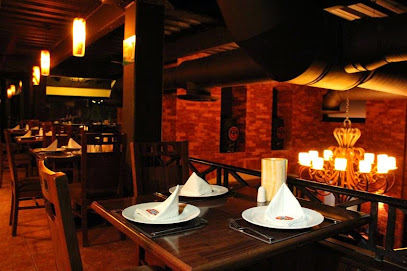
Markets, malls and hidden boutiques
Plaza Polifórum
Discover Plaza Polifórum, Tuxtla Gutiérrez's premier shopping mall offering a blend of retail, dining, and entertainment experiences for every visitor.
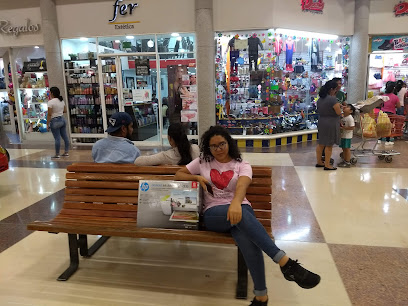
Plaza Ámbar Fashion Mall
Experience the ultimate shopping and dining destination at Plaza Ámbar Fashion Mall in Tuxtla Gutiérrez, featuring top brands and delightful eateries.

CULTURAS SHOP
Explore the vibrant world of fashion and body art at Culturas Shop, a boutique in Tuxtla Gutiérrez offering unique accessories and piercing services.
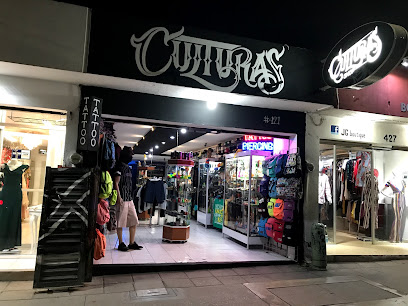
Mercado de Artesanías
Explore the vibrant Mercado de Artesanías in Tuxtla Gutiérrez, a cultural hub for unique handicrafts and local delicacies.
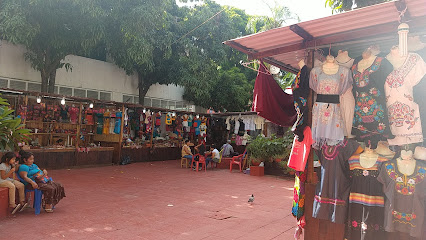
Boutique “El Capitán”
Discover Boutique El Capitán in Tuxtla Gutiérrez for elegant tuxedos and tailored suits that redefine men's formal wear.

Patinetas Slide Skateshop
Explore Patinetas Slide Skateshop in Tuxtla Gutiérrez for the best skateboards, gear, and a taste of local skate culture.

El Mundo de Barbie
Discover a magical world of Barbie at El Mundo de Barbie, a whimsical gift shop in Tuxtla Gutiérrez filled with dolls, accessories, and nostalgia.
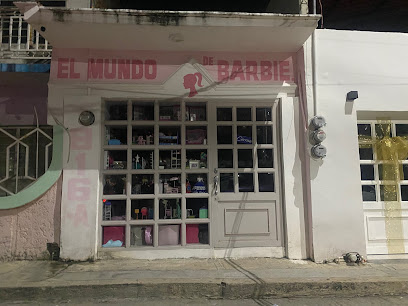
CLOTHING STREET MARKET
Explore the eclectic Clothing Street Market in Tuxtla Gutiérrez for unique vintage finds and a vibrant local shopping experience.

Libelula
Discover unique gifts and local crafts at Libelula, a charming gift shop in the heart of Tuxtla Gutiérrez, Chiapas, capturing the essence of Mexico.

Tienda Colectiva Azul Turquesa
Explore the vibrant crafts of Chiapas at Tienda Colectiva Azul Turquesa, where each piece tells a unique story.

Boutique Mayoreo del Sur
Explore the vibrant fashion scene at Boutique Mayoreo del Sur in Tuxtla Gutiérrez, where unique styles meet local culture and affordability.
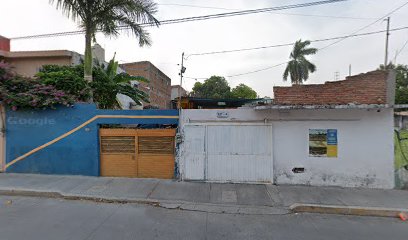
Essential bars & hidden hideouts
Boston's Tuxtla
Enjoy gourmet pizzas and thrilling sports at Boston's Tuxtla, the ultimate destination for food lovers and sports fans in Chiapas.
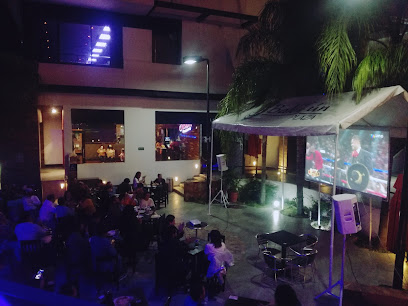
Jack Pub
Discover the vibrant nightlife at Jack Pub in Tuxtla Gutiérrez, where great drinks, music, and a lively atmosphere await you.
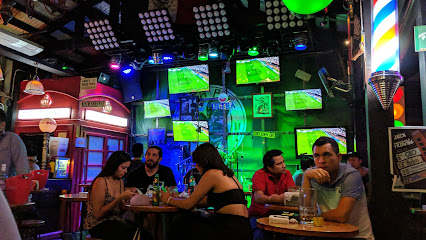
Salón 17
Explore the vibrant flavors of authentic Mexican cuisine at Salón 17 in Tuxtla Gutiérrez, where every meal is a celebration of local culture.
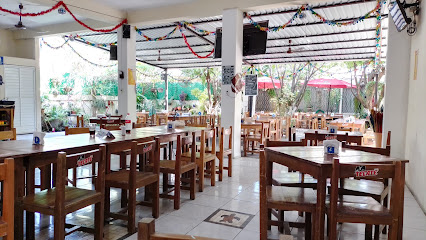
Tarimitas Bar
Experience the vibrant nightlife of Tuxtla Gutiérrez at Tarimitas Bar, where refreshing drinks and lively ambiance meet.
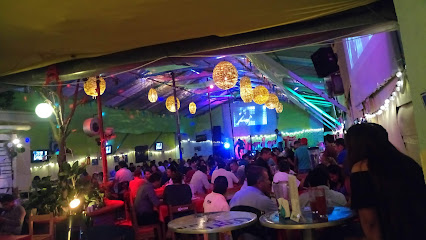
Restaurant Bar L Esquina
Experience the vibrant culinary scene at Restaurant Bar L Esquina, where local flavors and grilled delights await in Tuxtla Gutiérrez, Chiapas.
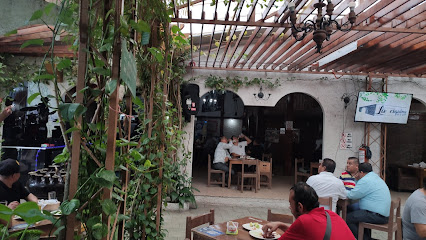
Pipiripau Resto Bar
Experience the vibrant nightlife and authentic flavors of Tuxtla Gutiérrez at Pipiripau Resto Bar, a must-visit destination for every traveler.
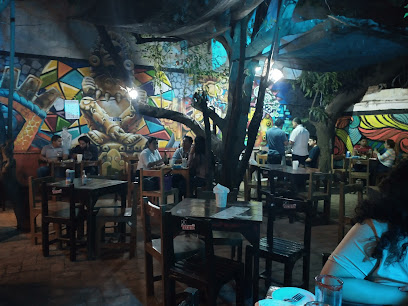
Boca Negra Oriente
Discover the vibrant nightlife of Tuxtla Gutiérrez at Boca Negra Oriente, where local flavors and fun meet in a lively bar atmosphere.
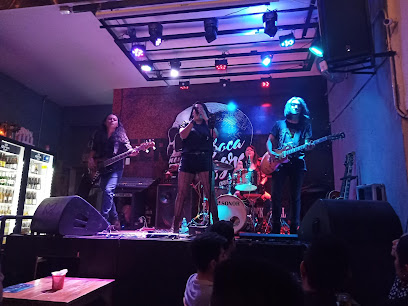
Aguamarina
Experience vibrant nightlife at Aguamarina, a premier bar in Tuxtla Gutiérrez with signature cocktails and a lively atmosphere.
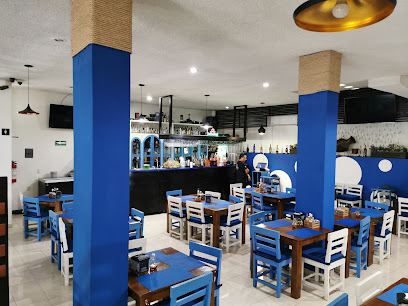
Cadejo's bar
Experience the lively atmosphere and great drinks at Cadejo's Bar in Tuxtla Gutiérrez, a must-visit destination for nightlife lovers.
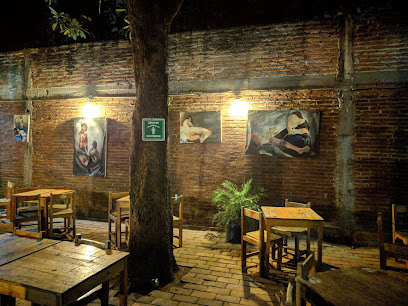
Santa Urban Club
Experience the vibrant nightlife of Tuxtla Gutiérrez at Santa Urban Club, a top bar where locals and tourists unite for unforgettable evenings.
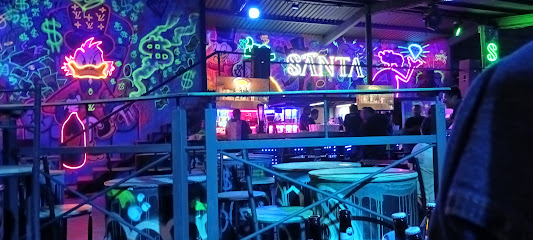
Bar El Tio Chueco
Experience the vibrant local nightlife at Bar El Tio Chueco in Tuxtla Gutiérrez, a perfect blend of relaxation, culture, and great drinks.
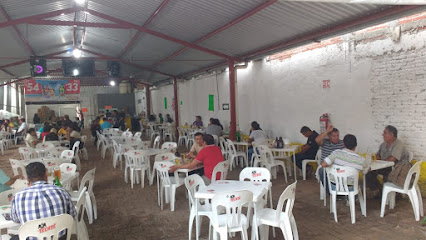
La Diabla
Experience the vibrant nightlife of Tuxtla Gutiérrez at La Diabla, where local flavors and lively ambiance meet for unforgettable evenings.
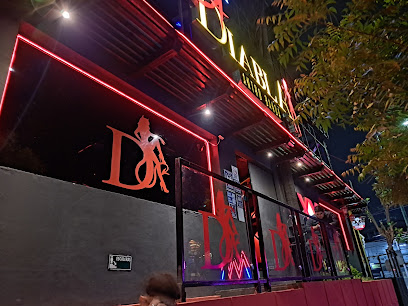
The Spot Drinks, Snacks & Pulques
Discover a vibrant bar in Tuxtla Gutiérrez offering traditional pulque, refreshing drinks, and delicious snacks in a lively atmosphere.

Bar La Cava
Experience the upscale charm of Bar La Cava in Tuxtla Gutiérrez, where exquisite drinks and a sophisticated atmosphere await you.
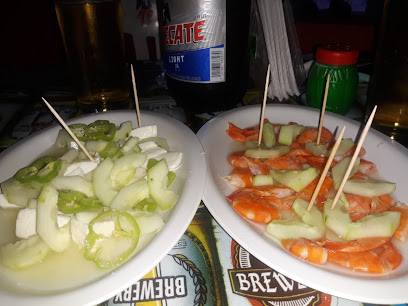
Local Phrases
-
- HelloHola
[oh-lah] - GoodbyeAdiós
[ah-dee-ohs] - YesSí
[see] - NoNo
[noh] - Please/You're welcomePor favor/De nada
[por fah-bor/deh nah-dah] - Thank youGracias
[grah-see-ahs] - Excuse me/SorryPerdón/Lo siento
[pair-dohn/loh see-en-toh] - How are you?¿Cómo estás?
[koh-moh ehs-tahs] - Fine. And you?Bien. ¿Y tú?
[byen. ee too] - Do you speak English?¿Hablas inglés?
[ah-blahs een-glays] - I don't understandNo entiendo
[noh ehn-tee-ehn-doh]
- HelloHola
-
- I'd like to see the menu, pleaseMe gustaría ver el menú, por favor
[may goos-tah-ree-ah vehr ehl meh-noo, por fah-bor] - I don't eat meatNo como carne
[noh koh-moh kahr-neh] - Cheers!¡Salud!
[sah-lood] - I would like to pay, pleaseMe gustaría pagar, por favor
[may goos-tah-ree-ah pah-gar, por fah-bor]
- I'd like to see the menu, pleaseMe gustaría ver el menú, por favor
-
- Help!¡Ayuda!
[ah-yoo-dah] - Go away!¡Vete!
[veh-teh] - Call the Police!¡Llama a la policía!
[yah-mah ah lah poh-lee-see-ah] - Call a doctor!¡Llama a un doctor!
[yah-mah ah oon dohk-tohr] - I'm lostEstoy perdido
[ehs-toy pair-dee-doh] - I'm illEstoy enfermo
[ehs-toy ehn-fehr-moh]
- Help!¡Ayuda!
-
- I'd like to buy...Me gustaría comprar...
[may goos-tah-ree-ah kohm-prar] - I'm just lookingSolo estoy mirando
[soh-loh ehs-toy mee-rahn-doh] - How much is it?¿Cuánto cuesta?
[kwan-toh kwehs-tah] - That's too expensiveEso es demasiado caro
[eh-soh ehs deh-mah-see-ah-doh kah-roh] - Can you lower the price?¿Puedes bajar el precio?
[pweh-dehs bah-har ehl preh-see-oh]
- I'd like to buy...Me gustaría comprar...
-
- What time is it?¿Qué hora es?
[keh oh-rah ehs] - It's one o'clockEs la una
[ehs lah oo-nah] - Half past (10)Media hora (10)
[meh-dee-ah oh-rah (deez)] - MorningMañana
[mah-nyah-nah] - AfternoonTarde
[tahr-deh] - EveningNoche
[noh-cheh] - YesterdayAyer
[ah-yehr] - TodayHoy
[oy] - TomorrowMañana
[mah-nyah-nah] - 1Uno
[oo-noh] - 2Dos
[dohs] - 3Tres
[trehs] - 4Cuatro
[kwah-troh] - 5Cinco
[seen-koh] - 6Seis
[says] - 7Siete
[syeh-teh] - 8Ocho
[oh-choh] - 9Nueve
[nweh-veh] - 10Diez
[dyehs]
- What time is it?¿Qué hora es?
-
- Where's a/the...?¿Dónde está...?
[dohn-deh ehs-tah] - What's the address?¿Cuál es la dirección?
[kwahl ehs lah dee-rehk-syohn] - Can you show me (on the map)?¿Puedes mostrarme (en el mapa)?
[pweh-dehs mohs-trar-meh (ehn ehl mah-pah)] - When's the next (bus)?¿Cuándo es el próximo (autobús)?
[kwan-doh ehs ehl proh-ksee-moh (ow-toh-boos)] - A ticket (to ....)Un boleto (a ...)
[oon boh-leh-toh (ah)]
- Where's a/the...?¿Dónde está...?
History of Tuxtla Gutierrez
-
Tuxtla Gutiérrez, the capital of Chiapas, has roots that trace back to the ancient civilizations of the region. Archaeological evidence suggests that the area was inhabited by the Zoque people, who thrived through agriculture and trade. Their rich cultural practices and social structures laid the foundation for the region's future development.
-
In the 16th century, the arrival of Spanish conquistadors marked a significant turning point for Tuxtla. In 1528, the Spanish established the town of Tuxtla as part of their colonial expansion in the New World. The indigenous population faced profound changes due to the imposition of new governance, religion, and economic systems.
-
Tuxtla Gutiérrez was officially designated as the capital of Chiapas in 1829. Throughout the 19th century, the city underwent considerable growth, with the establishment of key infrastructure, including roads and communication lines, which connected it to other regions. This period also saw the rise of coffee cultivation, which became a critical economic driver for Chiapas.
-
In the 20th century, Tuxtla Gutiérrez evolved into a cultural and political center for Chiapas. The city became known for its vibrant markets, such as the Mercado de los Granos, and institutions that promoted the rich indigenous heritage of the region. Throughout this time, Tuxtla also played a key role in political movements, particularly during the Mexican Revolution.
-
The late 20th and early 21st centuries brought rapid urbanization and modernization to Tuxtla Gutiérrez. Development projects transformed the city into a bustling urban center, with new educational institutions, healthcare facilities, and cultural venues. Despite these changes, the city has worked to maintain its cultural identity, celebrating traditional festivals and indigenous heritage.
Tuxtla Gutierrez Essentials
-
Tuxtla Gutierrez is the capital city of Chiapas and is easily accessible from other areas within the state. The main point of entry is through the Ángel Albino Corzo International Airport, located about 30 minutes from the city center. You can take a taxi or shuttle service from the airport to downtown Tuxtla. For those traveling by bus, several bus lines operate from cities like San Cristóbal de las Casas, Palenque, and Tapachula, with frequent departures throughout the day. The journey from San Cristóbal de las Casas takes approximately one hour.
-
Tuxtla Gutierrez offers various transportation options for getting around the city. Public buses are available and are an affordable way to navigate. Taxis are also common and can be hailed on the street or booked via apps. For a more local experience, consider using bicycle rentals available in some areas. The city is compact, making it convenient to explore many attractions on foot.
-
While Tuxtla Gutierrez is generally safe for tourists, it is advisable to remain vigilant, especially in crowded areas. Certain neighborhoods, such as some parts of the southern and western outskirts, have reported higher crime rates. Avoid walking alone at night in these areas and be cautious with your belongings. Always prioritize your safety and trust your instincts.
-
In case of emergency, dial 911 for police, fire, or medical assistance. The local hospital, Hospital de las Culturas, is equipped to handle emergencies. It's recommended to have travel insurance that covers medical issues. Pharmacies are widely available for over-the-counter medications for minor ailments.
-
Fashion: Do wear comfortable clothing suitable for the warm climate, and when visiting religious sites, dress modestly. Don’t wear beachwear away from the beach. Religion: Do respect local customs, and when visiting churches, be quiet and respectful. Public Transport: Do offer your seat to elderly passengers. Don’t eat or drink on public transport. Greetings: Do greet locals with a friendly 'Hola' or a handshake. Don’t engage in overly personal topics too soon. Eating & Drinking: Do try local specialties like tamales and coffee. Don’t drink tap water; always opt for bottled water.
-
To experience Tuxtla Gutierrez like a local, visit the markets, such as the Mercado de Santo Domingo, for fresh produce and local crafts. Engage with local artisans and don’t hesitate to ask questions about their work. For the best views, visit the Cañón del Sumidero, a stunning natural park just outside the city. Attend local festivals, especially the Feria de Tuxtla in November, to immerse yourself in the culture.
Trending Landmarks in Tuxtla Gutierrez
-
Parque de la Marimba
-
Parque Central de Tuxtla Gutiérrez
-
Parque Caña Hueca
-
ZOOMAT
-
Parque Morelos Bicentenario
-
Jardín Botánico Faustino Miranda
-
Museo del Café de Chiapas
-
Calzada de las Personas Ilustres
-
Museo de la Marimba
-
Museo Chiapas de Ciencia y Tecnología (MUCH)
-
Letras de Tuxtla Gutiérrez
-
Fuente Monumental de la Marimba
-
Monumento a la Anexión de Chiapas a México
-
Réplica del Templo de las Inscripciones
-
Monumento a la Cultura Chiapaneca
Nearby Cities to Tuxtla Gutierrez
-
Things To Do in Quetzaltenango
-
Things To Do in Chichicastenango
-
Things To Do in Panajachel
-
Things To Do in Lake Atitlán
-
Things To Do in Flores
-
Things To Do in Antigua Guatemala
-
Things To Do in Guatemala City
-
Things To Do in Tikal
-
Things To Do in Oaxaca
-
Things To Do in Veracruz
-
Things To Do in San Ignacio
-
Things To Do in Puerto Escondido
-
Things To Do in Campeche
-
Things To Do in Rio Dulce
-
Things To Do in Punta Gorda

